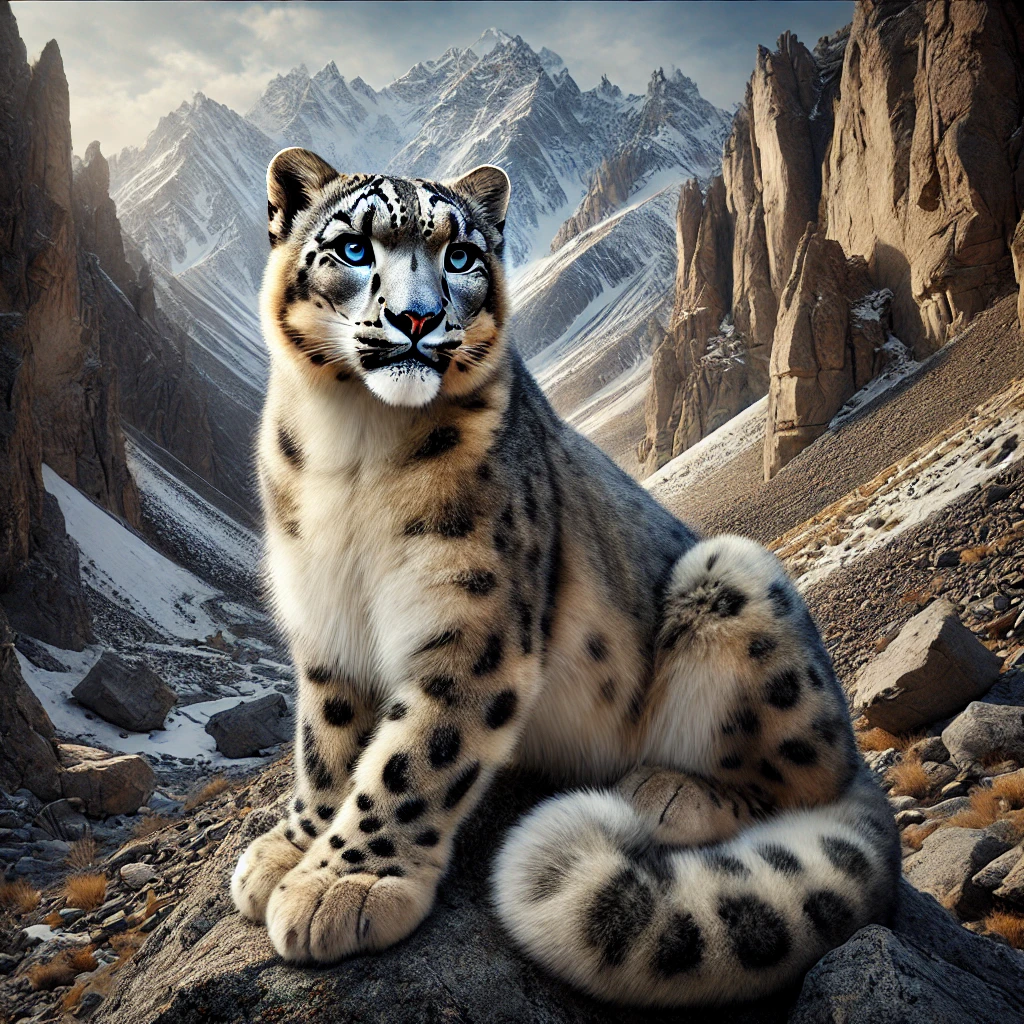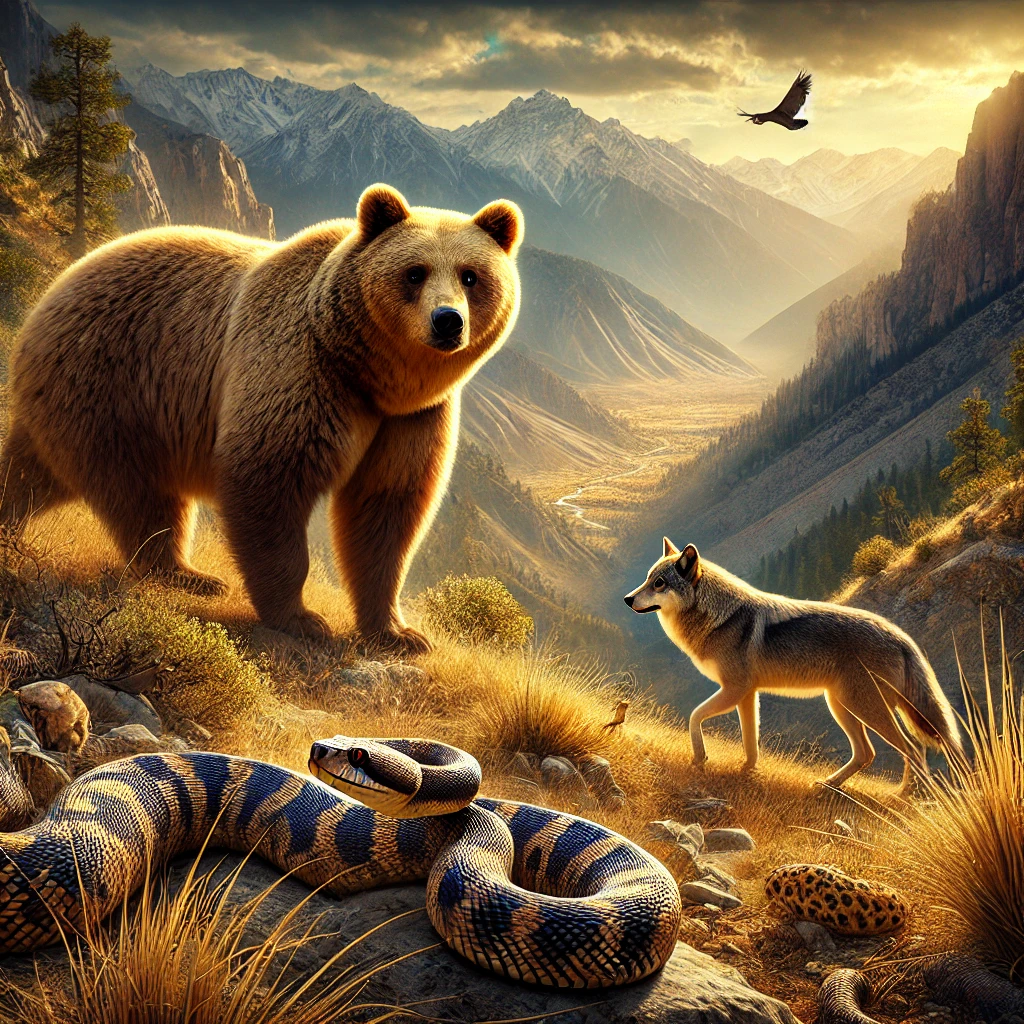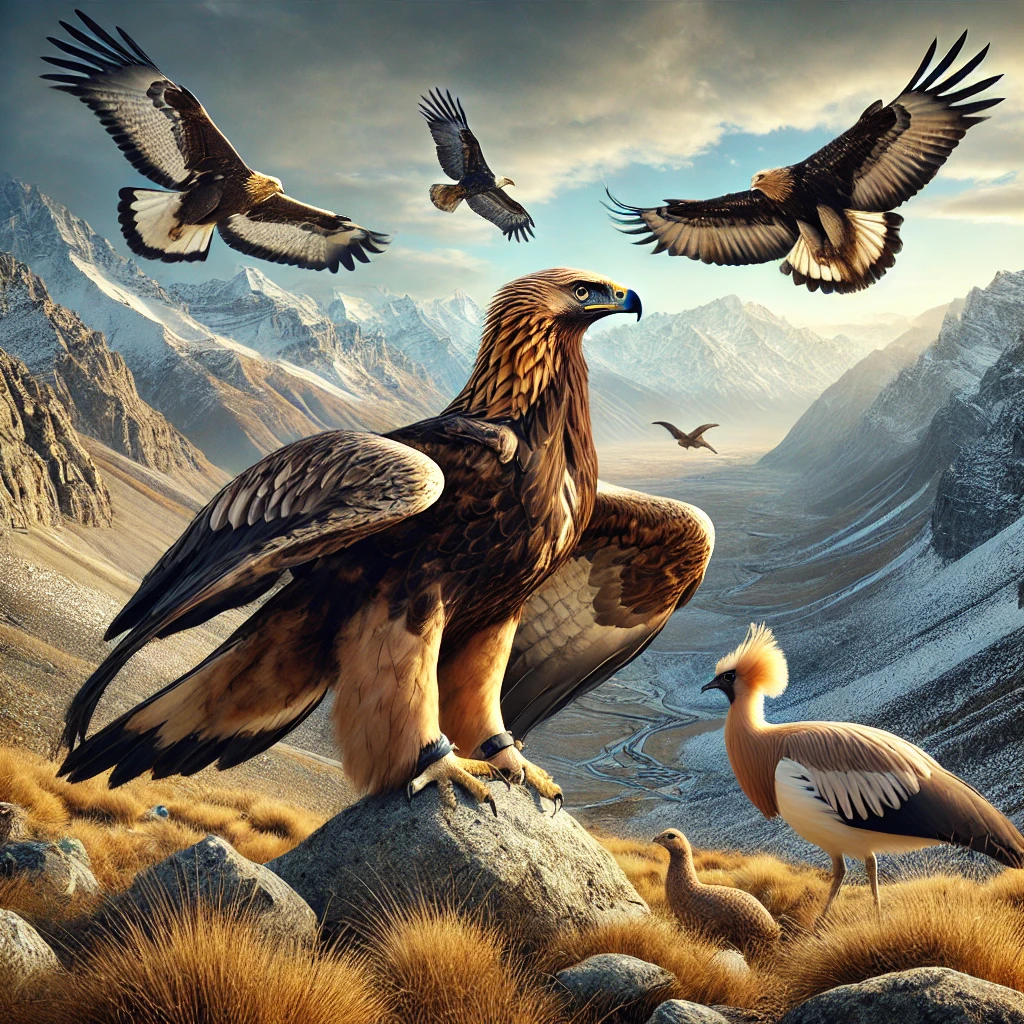Afghanistan, with its diverse landscapes ranging from rugged mountains to arid deserts and lush river valleys, is home to a fascinating array of wildlife. From majestic mammals that roam the highlands to rare and endangered species that thrive in remote regions, Afghanistan wildlife reflects the country’s rich biodiversity. This article explores the animals of Afghanistan, including its national animal, dangerous wildlife, and species unique to this culturally and geographically diverse country.
Introduction to Afghanistan Wildlife
Afghanistan’s unique geography creates varied habitats that support an impressive range of animals. The country’s rugged mountains, including the Hindu Kush range, as well as its dry grasslands and river valleys, provide shelter to animals adapted to extreme climates and rough terrains. However, due to decades of conflict and environmental challenges, many of these species are threatened or endangered. Despite these challenges, efforts to protect Afghanistan’s wildlife continue to grow, helping preserve some of the country’s most remarkable creatures.
Afghanistan National Animal: The Snow Leopard

Amoung Afghanistan national animals is the Snow Leopard (Panthera uncia), a rare and elusive big cat found in the high mountain ranges of Central and South Asia. Known for its thick, pale-gray coat, long tail, and large paws, the snow leopard is perfectly adapted to cold, rugged environments.
- Habitat: Snow leopards are typically found at high altitudes in the Hindu Kush mountains, where they navigate steep slopes and rocky terrain with ease.
- Conservation Status: The snow leopard is listed as Vulnerable by the International Union for Conservation of Nature (IUCN). Habitat loss, poaching, and climate change have contributed to their decline.
- Symbolism: The snow leopard represents one of the most famous Afghanistan dangerous animals, with resilience, grace, and beauty. Its status as Afghanistan’s national animal reflects the country’s admiration for this incredible predator and a commitment to its conservation.
Unique Animals Found in Afghanistan
Afghanistan’s diverse fauna includes various mammals, birds, and reptiles adapted to its mountainous and arid regions. Here are some notable animals that roam Afghanistan’s landscapes:
- Marco Polo Sheep (Ovis ammon polii): Named after the explorer Marco Polo, who described these wild sheep in his travels, the Marco Polo sheep have impressive, spiraling horns and are found in the mountainous Pamir region.
- Asiatic Black Bear (Ursus thibetanus): Also known as the moon bear, this bear species is recognizable by the white “V” marking on its chest. It inhabits forested areas in the eastern mountains of Afghanistan.
- Golden Eagle (Aquila chrysaetos): Known for its hunting prowess, the golden eagle soars high in the Afghan skies, primarily found in mountainous regions. It preys on small mammals and occasionally hunts larger animals like foxes and wild goats.
- Eurasian Lynx (Lynx lynx): This medium-sized wild cat has a thick coat and tufted ears, and is adapted to mountainous and forested regions. The lynx is an elusive predator, often hunting at night.
- Indian Wolf (Canis lupus pallipes): These wolves roam the grasslands and deserts of southern Afghanistan. Smaller than their northern counterparts, Indian wolves are highly adaptable and often travel in small packs.
Dangerous Animals of Afghanistan

Afghanistan is home to several potentially dangerous animals, especially for those unaccustomed to its wildlife.
While encounters with humans are rare, these animals can pose risks:
- Himalayan Brown Bear (Ursus arctos isabellinus): Found in the mountainous areas, especially near the Wakhan Corridor, these brown bears can be aggressive if they feel threatened. They are solitary animals and usually avoid human contact, but they can be dangerous if surprised or provoked.
- Gray Wolf (Canis lupus): Wolves in Afghanistan are not typically aggressive toward humans but may attack livestock, leading to occasional conflicts with herders. Wolves are highly adaptable and can be found in both mountainous and grassland regions.
- Saw-Scaled Viper (Echis carinatus): Known for its distinctive warning sound, this small but deadly viper is one of Afghanistan’s most venomous snakes. Its bite can be fatal if not treated promptly. It is primarily found in arid, rocky areas.
- Asiatic Black Bear: While they are generally reclusive, black bears can be dangerous if they feel cornered or if a mother bear is defending her cubs.
- Afghan Leopard Gecko (Eublepharis macularius afghanicus): Although not dangerous to humans, this gecko is a unique reptile found in Afghanistan’s deserts. Its vibrant coloring and distinctive spots make it a popular species among reptile enthusiasts worldwide.
Endangered Species in Afghanistan
Due to habitat loss, hunting, and climate change, many of Afghanistan animals face the threat of extinction. Some of the most critically endangered species include:
- Snow Leopard: Already discussed as Afghanistan’s national animal, snow leopards are vulnerable to poaching and habitat loss due to climate change.
- Pallas’s Cat (Otocolobus manul): This small, fluffy wild cat with a flat face and stocky build is native to Central Asia’s steppes and mountains. Its population is declining due to habitat destruction and human encroachment.
- Himalayan Brown Bear: Afghanistan’s brown bear population is extremely vulnerable, primarily due to habitat fragmentation and hunting.
- Asiatic Black Bear: Habitat loss and poaching pose significant threats to the black bear population in Afghanistan.
Conservation efforts are ongoing, but conflict and economic challenges make it difficult to implement comprehensive protection plans for these species.
Birds of Afghanistan

Afghanistan’s skies are also home to a variety of bird species, some of which are rare or migratory:
- Golden Eagle: Known as one of the world’s most powerful eagles, the golden eagle is a top predator in Afghanistan’s mountains and is often seen soaring above the rugged terrain.
- Lammergeier (Bearded Vulture) (Gypaetus barbatus): A unique vulture with a distinctive beard-like feature, the Lammergeier feeds mainly on bone marrow and is an important part of the ecosystem.
- Houbara Bustard (Chlamydotis undulata): This migratory bird is valued for its beauty but is often hunted illegally. Conservation efforts are in place to protect its declining population.
- Afghan Snowcock (Tetraogallus afghanicus): Endemic to Afghanistan, the Afghan snowcock inhabits high-altitude areas. Its adaptation to mountainous regions makes it difficult to spot, but it is a cherished species for bird watchers and nature enthusiasts.
Afghanistan’s National Symbols and Wildlife Conservation Efforts
Afghanistan’s unique wildlife, particularly its national animal, the snow leopard, reflects the resilience and adaptability of the country. With increasing international support, conservation programs are being established to protect Afghanistan’s natural heritage. Organizations are working alongside Afghan communities to reduce human-wildlife conflict and promote sustainable wildlife practices.
Some conservation strategies include:
- Anti-poaching Initiatives: Collaborations with local communities to reduce illegal hunting.
- Wildlife Reserves: Establishing protected areas for endangered species, especially in the Wakhan Corridor where snow leopards and Marco Polo sheep are found.
- Education and Awareness Programs: Educating locals about the importance of protecting endangered species to foster a sense of environmental stewardship.
Top 10 Unique Afghanistan Animals
Afghanistan is home to a remarkable variety of wildlife, much of it uniquely adapted to the country’s rugged landscapes, extreme climates, and high-altitude mountain ranges. From elusive big cats to beautiful, rare birds, Afghanistan’s animals offer a glimpse into the country’s rich biodiversity and environmental heritage. This article covers the top 10 most unique and fascinating animals found in Afghanistan, highlighting the incredible adaptations and characteristics that make them so special.
1. Snow Leopard (Panthera uncia)
One of the world’s most elusive big cats, the snow leopard is Afghanistan’s national animal and a symbol of resilience and strength. Known for its thick, pale-gray coat with black rosettes and spots, the snow leopard is adapted to cold, mountainous terrain. It can navigate steep slopes with ease, thanks to its powerful limbs and long, balancing tail.
- Habitat: High-altitude regions of the Hindu Kush mountains.
- Conservation Status: Vulnerable, with threats from poaching, habitat loss, and human-wildlife conflict.
2. Marco Polo Sheep (Ovis ammon polii)
The Marco Polo sheep, named after the explorer who first described it in the 13th century, is known for its stunning spiral horns that can grow up to 1.8 meters (6 feet) long. These wild sheep are among the most sought-after sightings for wildlife enthusiasts and can be found in the Pamir Mountains in Afghanistan’s northeastern Wakhan Corridor.
- Habitat: High-altitude grasslands in the Pamir Mountains.
- Conservation Status: Near Threatened, due to overhunting and habitat degradation.
3. Afghan Leopard Gecko (Eublepharis macularius afghanicus)
The Afghan leopard gecko is a unique and colorful reptile known for its striking spotted pattern. Unlike many other gecko species, it has movable eyelids, which it uses to protect its eyes from the arid, dusty environments in which it lives. Its vibrant coloring and hardy nature make it a popular pet in many countries.
- Habitat: Arid and semi-arid regions of Afghanistan.
- Conservation Status: Least Concern, but vulnerable to habitat loss and the exotic pet trade.
4. Eurasian Lynx (Lynx lynx)
The Eurasian lynx is a solitary and elusive wild cat known for its large, tufted ears and powerful build. Its thick coat, ranging from pale brown to grayish with dark spots, helps it blend into the mountainous terrain where it hunts at night. Lynxes are skilled hunters and prey on animals like hares, foxes, and small ungulates.
- Habitat: Mountainous forests and rocky areas.
- Conservation Status: Least Concern globally, though populations in Afghanistan are threatened by habitat loss.
5. Golden Eagle (Aquila chrysaetos)
The golden eagle is one of the most powerful birds of prey and is revered in Afghan culture. With a wingspan of up to 2.3 meters (7.5 feet), golden eagles are excellent hunters, using their sharp talons and keen eyesight to catch prey such as rabbits, marmots, and foxes. These eagles are a symbol of strength and freedom in the region.
- Habitat: Mountainous regions and open terrain.
- Conservation Status: Least Concern, though habitat loss and hunting pose local threats.
6. Pallas’s Cat (Otocolobus manul)
The Pallas’s cat, or manul, is a small, stocky wild cat with a flat face, large eyes, and a fluffy coat. It’s well-adapted to cold, high-altitude environments and can often be found in rocky areas and steppes. Pallas’s cats are unique among wild cats for their appearance and are known to have a quirky, grumpy expression.
- Habitat: Steppes and mountainous regions.
- Conservation Status: Near Threatened, primarily due to habitat loss and hunting.
7. Afghan Snowcock (Tetraogallus afghanicus)
The Afghan snowcock is a large, striking bird endemic to Afghanistan, making it one of the country’s true avian treasures. This high-altitude bird has a distinctive white face and throat with a gray-brown body, which blends seamlessly with the rocky mountainous landscape. Afghan snowcocks are known for their loud, echoing calls across the valleys.
- Habitat: High-altitude regions, primarily in the Hindu Kush mountains.
- Conservation Status: Least Concern, but limited range makes it vulnerable to habitat disturbance.
8. Indian Wolf (Canis lupus pallipes)
The Indian wolf is a smaller, leaner subspecies of the gray wolf, adapted to the arid and semi-arid environments of southern Afghanistan. These wolves often travel in small packs and have short fur, which helps them survive in warmer climates. They are known for their adaptability and resourcefulness in hunting.
- Habitat: Grasslands and deserts in southern Afghanistan.
- Conservation Status: Endangered, primarily due to habitat loss and human-wildlife conflict.
9. Asiatic Black Bear (Ursus thibetanus)
The Asiatic black bear, also known as the moon bear due to the white, crescent-shaped mark on its chest, is a reclusive and primarily nocturnal bear. Found in eastern Afghanistan, it is more agile than other bear species, often climbing trees to find food. Asiatic black bears are at risk due to habitat loss and poaching for their body parts.
- Habitat: Forested regions in eastern Afghanistan.
- Conservation Status: Vulnerable, with threats from poaching and deforestation.
10. Striped Hyena (Hyaena hyaena)
The striped hyena is a scavenger known for its eerie laugh-like calls and striped coat. Unlike the more social spotted hyena, the striped hyena is mostly solitary. It plays a vital role in the ecosystem by feeding on carrion and is rarely a threat to humans unless provoked.
- Habitat: Arid and semi-arid areas, including deserts and scrublands.
- Conservation Status: Near Threatened, with decreasing populations due to habitat loss and hunting.
Conclusion
Afghanistan is home to an incredible array of wildlife, from the majestic snow leopard and golden eagle to unique animals like the Afghan leopard gecko. The snow leopard, as the national animal, symbolizes Afghanistan’s wild beauty and resilience. However, ongoing threats like habitat loss and poaching pose significant challenges to Afghanistan’s biodiversity. With increased conservation efforts and awareness, there is hope for preserving these species for future generations.
FAQs
Q: What is Afghanistan’s national animal?
- Afghanistan’s national animal is the Snow Leopard, known for its beauty and adaptability to high-altitude habitats.
Q: What are some dangerous animals in Afghanistan?
- Dangerous animals include the Himalayan brown bear, gray wolf, and saw-scaled viper.
Q: Are there any unique species in Afghanistan?
- Yes, species like the Marco Polo sheep, Afghan leopard gecko, and Afghan snowcock are unique to the region.
Q: What is being done to protect endangered animals in Afghanistan?
- Conservation efforts include anti-poaching initiatives, protected wildlife reserves, and community education programs.
